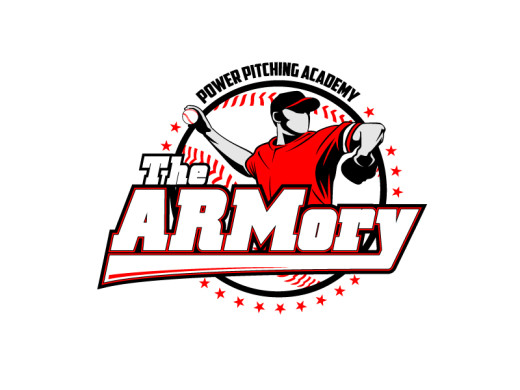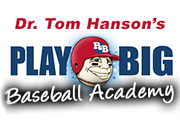ARMVALANCHE!!! Pushing Back Against the Cascade of Injuries
In the early spring of 1994, Kathy and I decided to leave the Air Force and settle in The Tampa Bay Area. We found a nice house to buy–the same one we currently live in. She chose it because the two story colonial style reminded her of her hometown of Charleston, SC.
We applied for a VA loan to finance the $118,000 asking price. On a Captain’s salary we needed to trim some expenses to qualify. I took on some extra work moonlighting as a home care physical therapist, and we used the extra dough to pay off some credit card debt. We also sold our minivan.
Yeah, I had a minivan. What about it?!
Anyway, that left us with only one car. A 1990 Nissan Sentra that already had 70,000 miles on it. It wasn’t easy but we had to make it work until we could close on our new home in June. Every morning Kathy and I would wake up at 5:30 am, shower, dress, nestle our sleeping 3 year old son into his car seat and make the 45 minute commute so I could report to work at the MacDill AFB hospital by 7:00 am. At 4:30 Kathy would pick me up and we’d race home where I would change clothes, grab a sandwich and head out to see patients until 9:00 pm.
On the day we closed, I bought a house, a car and a lawn mower all in the same day. Kathy began sporting around town in her new Ford Explorer, but I held on to that old Nissan for 6 more years.
When I left the Air Force in 1996, I started a home care Physical Therapy company and then opened up an outpatient clinic in 1998. Like every fledgling entrepreneur, I was busy…real busy (I guess some things never change). I was constantly running from patient to patient and back to the clinic to see more patients.
I drove that little black Sentra hard, often logging over 1000 miles per week, but I had no time for even the slightest maintenance. Oil changes were rare, and the tires were changed only if they wore out and I had to drive around on that little donut tire for a week. (For the record, that tiny donut spare tire is possibly the worst idea ever to emerge from the automotive industry).
I never had a bad accident, but I ran into things.
Things ran into me.
The body began to look like the face of the moon. But me and the little black beauty just kept going.
Then one day I was driving down the road in a retirement community called Sun City Center when the old reliable Sentra started making a funny noise. My first impulse was to do what I always do when my car makes a funny noise–turn the radio up–but that was broken too, so I just pumped the gas pedal a few times and kept going. Soon the vehicle slowed to a crawl and made this noise: “Chugga Chugga Chugga Boom! Pshhhhhh.” And then it stopped.
Forever.
AAA picked it up and backed it into my driveway. I could never get it to start again, and on the advice of a mechanic friend I called the Salvation Army. They hauled it off and gave me receipt for a tax deduction for the estimated value if the car…$250.
I miss that old car.
You know, if I had only taken the time to do a little preventative maintenance, it might have kept running for a lot longer.
Isn’t it that way with a pitcher’s arm? You’ve seen all the reports about the “armvalanche” of injuries.
According to Dr. James Andrews and Dr. Koko Eaton, Glen Fleisg PhD, and major league “experts” around the country, many of these injuries are just the culmination of damage done early in these pitchers’ youth baseball careers.
In that light, I have been buried in research on how to stem the tide and push back the armvalanche of injuries. While work loads and overuse are an important component, the missing part in the raging debate seems to be in addressing mechanical and physical inefficiencies that contribute to early damage.
Stop by any little league ball park and observe some of the horrific mechanical patterns some of these young warriors are using.
If you know anything about arm care and injury risk reduction, it will give you the willies.
On Wednesday, April 23rd at 7:00 pm EST, I’ll be presenting a live seminar/webinar called Save The Cannons: Developing Throwing Ability While Keeping Young Arms Safe and Healthy.
Topics will include:
Will pitch limits prevent injury?
Is overuse really the problem? (Hint: not usually)
Are curve balls safe for young arms?
What about a splitter?
What is a growth plate and how do I protect it?
What is a labrum and how do I protect mine?
What is a Rotator cuff and how do I protect mine?
What is a Tommy John Ligament and how do I protect it?
Are my throwing mechanics hurting my arm?
Is side arm throwing safe?
Is it really tendonitis?
What are the safest and most efficient throwing mechanics?
How do I teach/learn safe and effective throwing mechanics?
If my mechanics are good, what other factors could contribute to injury?
How do I balance development of ability and safety?
If I do get hurt, how should I manage it?
Where are the most important factors in recovery from injury?
If you are a pitcher, position player or the parent, coach or teacher of a throwing athlete this might be the most important hour of information you’ve ever heard.
CLICK HERE and register ASAP!!
Whether you can attend live or online…I look forward to seeing you there!
Regards,
Randy Sullivan, MPT
CEO, The ARMory Power Pitching Academy










Leave a Reply